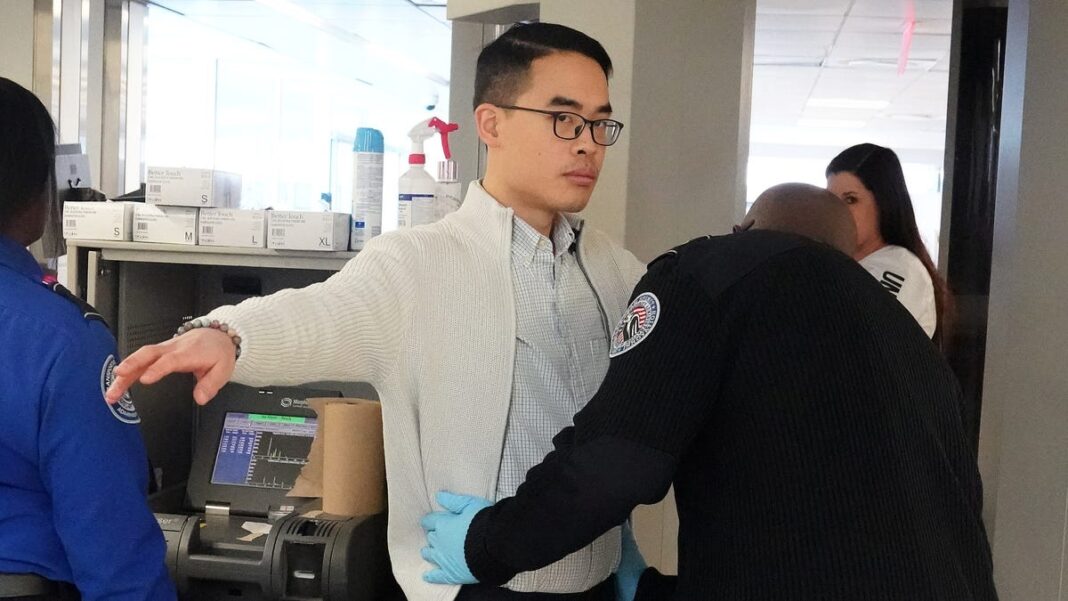What you can and cannot bring in your carry-on, according to TSA
For many travelers, going through TSA checkpoints can be quite nerve-wracking.
A 2019 survey by Priority Pass revealed that almost half of travelers find security checks to be one of the most stressful aspects of flying.
Getting stopped by TSA officials, whether it concerns your bag or yourself, is rarely a nice experience, especially when it results in the loss of items. The long list of items you can’t take on board and restrictions on liquids contribute to the stress even more.
With TSA screening numbers reaching new highs last summer, nobody wants to be the passenger causing a delay.
Here’s what travelers need to understand about TSA regulations.
What can I take with me on a plane?
As travelers often concentrate on their toiletries, here’s a quick summary of what the TSA allows regarding liquids: Shampoos, lotions, and similar items must be in travel-sized containers of 3.4 ounces (100 milliliters) or less. Powders can be up to 12 ounces (250 milliliters). This doesn’t apply to baby formula or breast milk, which have different guidelines.
Below is a list of other items that are generally permitted:
- Bottle openers
- Common lighters
- Sports balls
- Camera gear
- Non-blade corkscrews
- Crochet hooks
- Hot hair tools with a cord
- Disposable razors
- Dry batteries
- Fresh flowers without water
- Utensils, as well as nail or hair clippers
- Cigars and cigarettes
For a complete list of what you can and cannot bring, check the official TSA website or download the MyTSA app. Remember, TSA officials may request additional screening of your belongings at their discretion.
Which items are banned in carry-on luggage?
Items typically regarded as weapons or dangerous are not allowed, including:
- Ammunition
- Firearms
- Sharp items and multi-tools
- Baseball bats
- Bear spray
- Box cutters
- Some cordless hot hair tools
- Foam swords
- Gel candles
- Hammers
- Gel heating pads
- Hiking sticks
What are the liquid restrictions for TSA?
The TSA allows passengers to carry liquids, aerosols, gels, creams, and pastes inside a quart-sized bag. Each container must hold no more than 3.4 ounces (100 milliliters). To make things smoother at security, place them in a separate bag and take them out for inspection.
A good rule to remember is the TSA 3-1-1 guideline: 3.4 ounces per container, one quart-sized bag, and one bag per traveler.
Can I bring food through TSA?
The TSA does permit certain food items in your carry-on.
If you’d like to avoid overpriced airport food, you can bring hot meals like pizza or cooked meats, but they will need to be scanned. However, avoid taking liquids and gels—such as soup, jelly, hummus, peanut butter, and yogurt—that exceed 3.4 ounces.
Here are some additional food-related regulations by TSA:
- Other acceptable food items include solid cheese, solid chocolate, coffee, nuts, cookies, crackers, fresh eggs, pies, cakes, sandwiches, and tamales.
- TSA prohibits fresh meat and seafood unless they’re completely packed with frozen ice packs.
- Alcohol must also be in containers of 3.4 ounces or smaller (like those mini bottles) and cannot exceed 140 proof.
- Breast milk and baby/toddler food and drinks, such as baby formula, are allowed without needing to be frozen, but might face extra screening if partially frozen.
- Fresh fruits and vegetables can be brought, but not when flying between Hawaii, Puerto Rico, or the U.S. Virgin Islands due to invasive species concerns.
What are the TSA guidelines for carrying medication?
You can bring medications in your carry-on bag, and it’s actually recommended in case your checked luggage gets lost. You don’t have to inform TSA personnel about your medication unless it’s a liquid, in which case it should be in “reasonable quantities,” and it’s best to let officers know beforehand if it requires additional screening. Keep in mind that medicines will also be screened.
What should I wear through airport security?
While comfort is key for your flight, be aware that unless you have TSA PreCheck, you will need to remove your shoes. Choose shoes that are easy to take off, along with socks to avoid walking barefoot on potentially dirty floors.
You can keep on any religious, cultural, or ceremonial attire and jewelry, although certain metals might trigger alarms, leading to a pat-down.
TSA recommends steering clear of accessories that look like weapons or have sharp edges, as these are likely to attract attention.
Can I fly without my ID?
Yes, it is possible. If you misplace or forget your passport or ID, the TSA has other methods to verify your identity and allow you access. You can present alternative forms of identification or complete a form providing details such as your address and Social Security number. Expect to undergo more extensive screening when passing through security as well.

